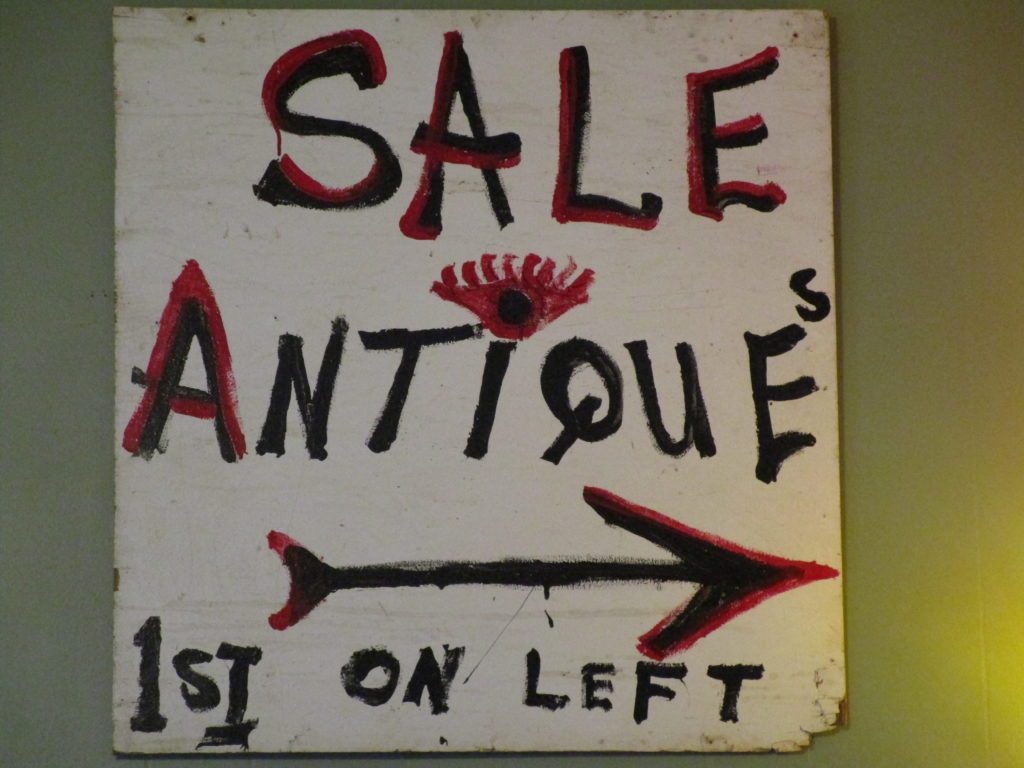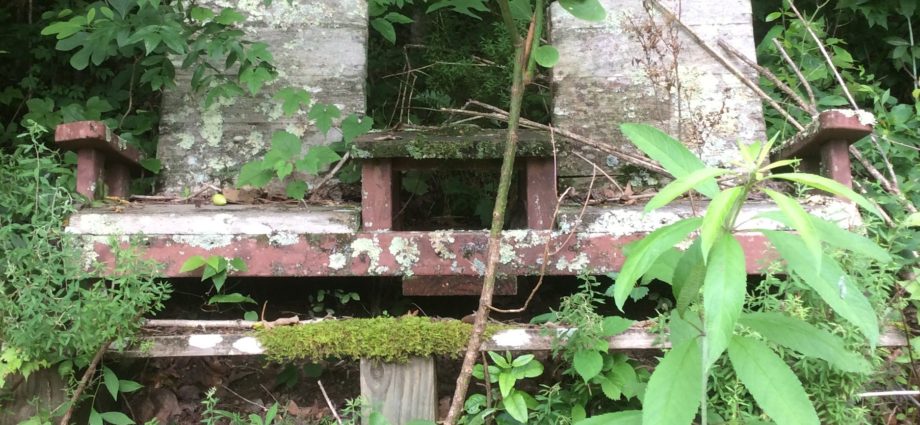Inside and outside Appalachian homes, you might find any number of up-cycled, homemade gadgets pieced together in ways that Dr. Frankenstein would envy. You might notice saw-marked furniture restored as closely as possible to original designs. Folk art, tasteful or not, could be a painted sign, string art, or even calendar pictures hung on the wall.

Folk art could be sculptures or what-nots constructed from whatever’s lying around the house. Or it might grace a yard’s worn decor — an old bowl for a birdbath, a pallet wood chair, a broken-down box spring for climbing plants. Open an Appalachian bedroom door and you might find a hand sewn “ugly quilt” fashioned from scraps of old clothes.
In the pantry or cellar, a colorful array of preserves — vegetables, fruits, juices, jellies, jams, sauces — might be stacked neatly in rows. You might walk on several handwoven rag or plastic bag rugs or find carved wooden spoons and gourd water dippers in the kitchen. You might see intricately designed canes standing solidly in a corner or propped near a chair. Each creation bears a little whimsy, a flash of style, or a personal touch.
Many of the items I mentioned could’ve been handed down from older generations. Appalachian homes are seemingly surrounded by ancestors, often beginning with the four corners of their land. A bygone miner’s hat lays atop an end table. Old, black & white or tintype photos are fitted snugly inside picture frames. An aged family Bible adorns a coffee table. That has been my Appalachian experience, at least.
Something of my ancestors, some image, invention, or handiwork is in every room of my house. Most times, I feel a delightful connection with the person whose hands owned, crafted, or restored each item. That bond brings me to such a warm and grateful understanding of what it means to be a descendant from such a long line of ancestors. I am embraced by them all.
Other times, I feel a little smothered and squeezed with too much expectation, as if their wise, old eyes were on me, though most of these feelings are when I’m either overwhelmed or up to mischief. I am often awestruck by generations of Appalachian creativity and ingenuity, especially when some talents arguably outshine others. My father was such a talent.
My father was a wonderful carpenter, woodworker, whittler, mason, sketch artist, mechanic, and mastered just about any other talent, even music, which he played by ear. Whenever I went to his shop and asked him what he was doing or making, he said he was “just tinkerin’ around.” He enjoyed every project to the nth degree. He restored old cars and trucks, refurbished (and sometimes made) furniture, whittled little woodland creatures and carved canes.
Whittlers like him would tell you they “see” the destiny of a piece of wood and create it that way. He and my mother drafted and constructed a four-bedroom house with their own hands, inside of which he built a hearth masterpiece. He erected a small barn and raised farm animals as pets.
He had a great eye for detail, and, even when he didn’t realize it, he produced playful, imaginative folk art. The only thing he hadn’t tried was painting on canvas. He was gifted everything he needed to start, but a cancer diagnosis put an end to that. He died in 2019.
No one is perfect, as we all come to realize. My father was no exception and neither am I. But, when I look at his creations all around me, I remember him “tinkerin’” in his shop, determined, smiling, or whistling to beat the band. I touch something he built or rebuilt — a table, a chair, a jewelry box, a lamp — to feel a father’s emanating joy and love. He is all around me and I am embraced.
**Photography by Tom and Delonda Anderson












